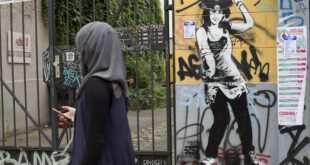Reviewed by Rasha El Ibiary, University of Newcastle Upon Tyne
Kamalipour, Yahya R. and Snow, Nancy (eds.) War, Media and Propaganda: A Global Perspective. Lanham, MD: Rowman and Littlefield Publishers, Inc. 2004. Paperback. 280 pages. ISBN: 0-7425-3562-2. $27.95.
Yahya Kamalipour and Nancy Snow's anthology "War, Media and Propaganda" sheds light from diverse perspectives on some aspects of the media's role, willing or not, in fulfilling propaganda and public diplomacy targets in wartime, and questions the limits and determinants of such a wartime power relationship with a special focus on television coverage of the latest US-led invasion of Iraq, 2003.
Both Douglas Kellner and Daya Kishan Thussu detail the significant role of US television networks in serving the American foreign policy war agenda. Starting with a brief description of Rupert's Murdoch's transnational TV empire as well as Murdoch's multiple statements about the war's potential to "fuel an economic boom in the West" and his "unconditional endorsement" of US and UK leaders' military action, Thussu provides evidence of a strong and decisive media backing for the "Republican Cause."
"Murdoch's media acted as frontline cheerleaders for US military action in Iraq," she says, adding that media played a crucial role "in preparing and then retaining public opinion in favor of the invasion." Kellner also strongly criticizes the way US broadcasting networks constructed the war as "providing a conduit for Bush administration and Pentagon propaganda."
Murdoch's dominance of many global media markets, however, did not extend to the Arab world, where newly born Arabic TV networks transmitted images of pain, death, and destruction. While providing several specific examples of "distorted" war coverage, Kellner does not miss the contrast between the US networks framing of the invasion as "Operation Iraqi Freedom" or "War in Iraq" and the Arab networks showing it as an "invasion" and "occupation" of Iraq. Mahboub E. Hashem concurs with Kellner, adding that the Arab media did not fail to draw critical comparisons between the "legitimate" Palestinian struggle against the "illegitimate" Israeli occupation of their lands, noting that "the Iraqis and Palestinians were seen as 'freedom fighters,' 'resistance forces,' 'Mujahideen,' or 'Fedayeen.'"
This challenge intensified with the many instances of contradictions between what the coalition media "said" and what the Arab networks "showed," according to Kellner. While Donald Rumsfeld was describing the bombardment as "the most precise in history … aimed at military not civilian targets," Arab as well as many global networks "focused on civilian casualties and presented painful spectacles of Iraqi suffering." Hashem as well says that the Arab channels "showed Iraqi residential neighborhoods, hospitals and schools that where hit by the so-called smart weapons." Another example, adds Kellner, was the British and US claim in the first days of war that the cities of Umm Qasr and Basra had been captured, while "television images showed quite the opposite." Thus did the Arab networks challenge the Americans by constantly showing images of death and destruction, contradicting perceived victories, drawing comparisons between the Iraqi and Palestinian cases, and putting Americans and Israelis in one camp as a single enemy.
A striking example of US media distortion was the story of saving Private Jessica Lynch "presented in the form of an entertainment show, drawing visual techniques borrowed from Hollywood," says Thussu. The infotainment event of rescuing Lynch from Iraqi captors by US Special Forces was widely exposed after a BBC documentary "showed that Iraqi doctors had looked after her."
Kellner also highlighted the "embedding" of war reporters, doubting their "ability to be objective" as they solely depended on the protection of "coalition" military, lived with troops, and signed a "rigorous set of restrictions on their reporting." Roland Paul Larson, who was embedded with the military escorts, agrees with Kellner. In his chapter, Larson describes the "bonding" relationship that is established with the soldiers throughout the war. "We were all Americans in a foreign land and in danger. It was quite difficult not to psychologically surround the wagons and see yourself as an us against a them." However, though Larson admits that "bonding" with the soldiers was a "potential source of professional complications," he concludes. "It never seriously affected my reporting," clarifying that his "obligations as a journalist" never intertwined with his "friendship for a soldier."
This explains why he thinks the bonding was "positive", as "soldiers became helpful and forthcoming with information and opinions." Larson's position, however, cannot be generalized on all "embedded" reporters, as he accompanied a supporting division, where news was scarce. Larson seems to miss, however, that the scarcity of news was not only due to censorship and propaganda techniques practiced by the military but also his tunnel vision of the war. The embedding or "bonding," by its very nature, not only put him in one camp with the fighting soldiers, but also made him miss the war he was supposed to attend.
In contrast to Larson, Dana Hull of the San Jose Mercury News refused to be "embedded" with the soldiers she was supposed to report on. "I wanted to spend as much time as possible with Iraqi civilians, talking with them about their lives over the past decade in their homes and schools and mosques." Hull, then, chose to report the aftermath of the war, where news distortion and manipulation seem to have continued, though on a grudgingly lower scale.
The killing by US soldiers of a 12-year-old Iraqi boy while playing on his roof is the most significant of the several instances of media disinformation that Hull mentions. Hull first saw the story on Al Jazeera but tuning into other Arab and western channels found nothing. She rushed to the boy's house. The family said the boy had gone to play on the roof by night and when one of the soldiers saw him, he fired more than five bullets, ignoring a neighbor's loud call, "Baby!! Baby! Don't shoot!!" Hull was surprised to discover that she was the only western journalist to visit the family.
The relative freedom of movement and reporting that Hull as opposed to Larson enjoyed allowed her to show Western audiences a different facet of war -- the human impact. Hull's relative freedom, however, did not prevent the US army from disclaiming any responsibility for the child's death and for other "atrocities" committed throughout the war. The fact that Al Jazeera covered the event in a timely fashion illustrates the continued challenge presented by influential Arab networks to the US manipulation and monopoly of news.
One explanation for such an attitude on the part of the US and British armies and elements of the US and British media is provided in a chapter by Karim H. Karim. Karim highlights what he believes to be four dominant stereotypes about Arabs in the Western/American media, namely "greed, barbarism, lust and violence," commenting that "basic western notions" about Muslims' characteristics date back centuries and still determine the media frameworks for the portrayal of events involving Muslims today.
According to Karim, scholars also played a significant role in the Western media misrepresentation of Arabs and Muslims. While some academics, such as Samuel Huntington and Benjamin Barber, considered Muslims as "the new major threat to the West," others, such as Bernard Lewis and Ellie Kedourie, "[acted] more as propagandists than academics," as they attempted to show that "militants among contemporary Muslims are present-day incarnations of terrorists from the beginning of Muslim history." The mass media, rather than objectively bringing those views into question and reporting their relation to truth, adopted them as "frameworks in their reporting about Muslims," adds Karim.
Kamalipour and Snow's book seems to have met its goal of "denouncing terrorism, in all forms, including war, and promoting cooperation among regional and international organizations." Combining various viewpoints from Eastern and Western countries, it successfully provides a constructive dialogue on the critical wartime role of the mass media. As well as highlighting major obstacles to critical coverage, new wartime features of television coverage, and challenges to the journalists' role, it provides explanations and suggests solutions aimed at bridging the widening gap between East and West.
 Arab Media & Society The Arab Media Hub
Arab Media & Society The Arab Media Hub




